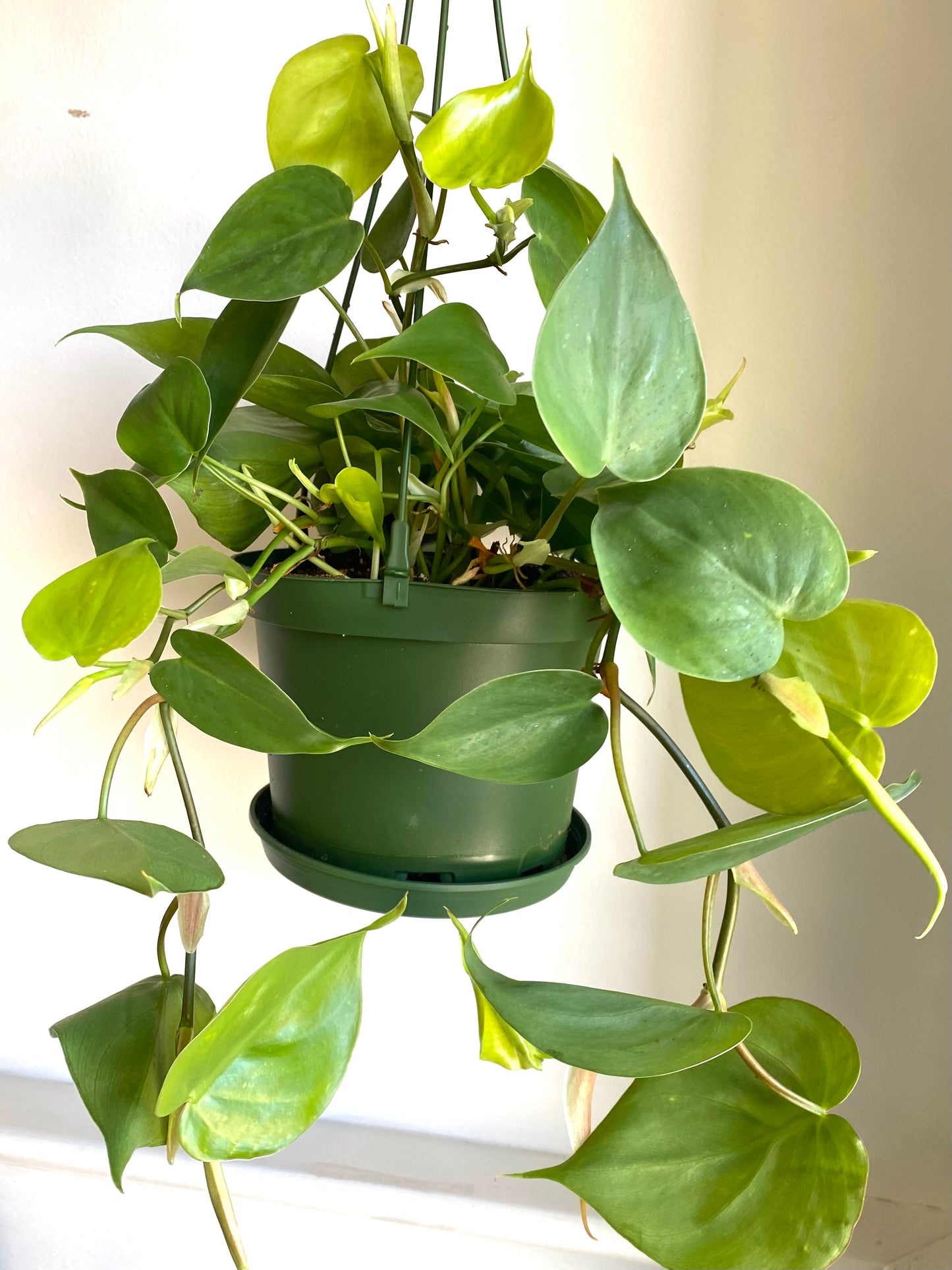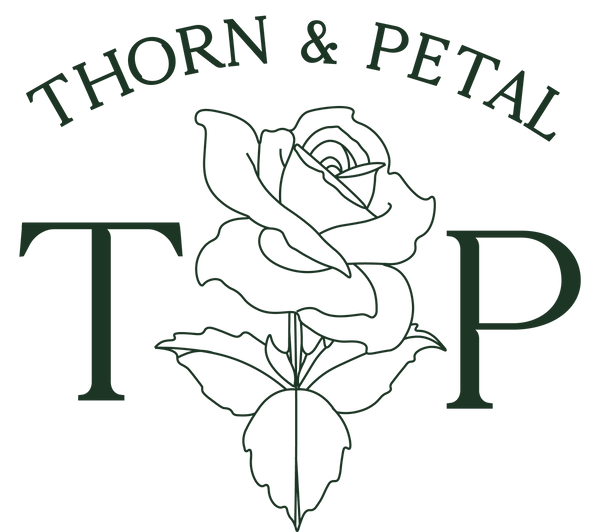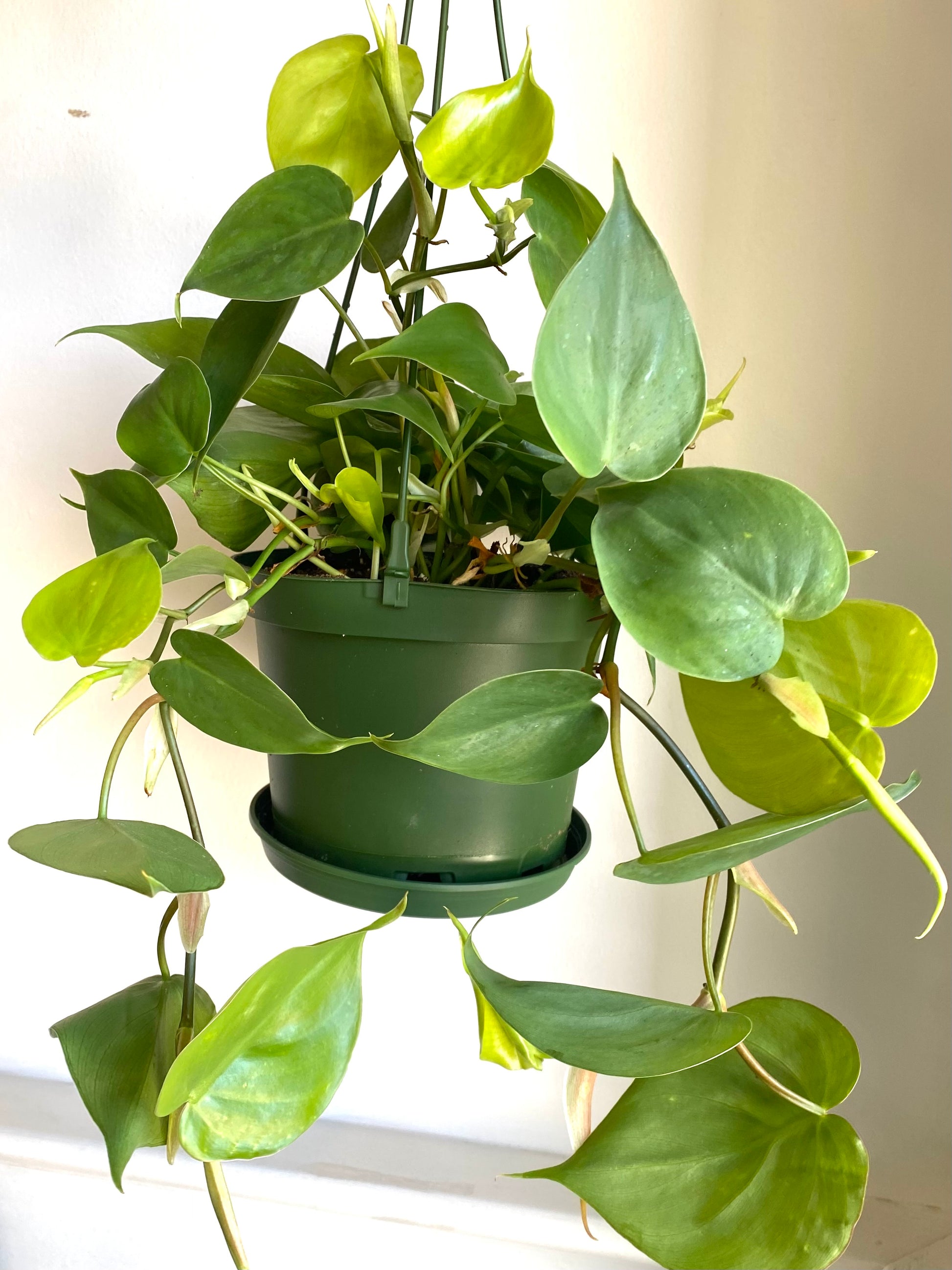Heart Leaf Philodendron Hanging Basket
Heart Leaf Philodendron Hanging Basket
Couldn't load pickup availability
Heartleaf philodendron, scientifically known as Philodendron hederaceum var. oxycardium, is a popular and easy-to-care-for houseplant valued for its attractive foliage and air-purifying qualities. Here's some information about heartleaf philodendron:
-
Appearance: Heartleaf philodendron is named for its heart-shaped leaves, which are typically dark green and glossy. The leaves can grow quite large, reaching lengths of 2 to 4 inches (5 to 10 centimeters) and widths of 1 to 3 inches (2.5 to 7.5 centimeters). The plant has a vining growth habit, with stems that can grow several feet long. Heartleaf philodendron may produce aerial roots along its stems, which help support the plant as it climbs.
-
Growth Habit: Heartleaf philodendron is a trailing or climbing vine that can be trained to climb up a support structure or allowed to cascade down from a hanging basket. It is a relatively fast-growing plant, especially under optimal growing conditions, and can quickly fill out its container or cover a trellis or support.
-
Cultivation: Heartleaf philodendron is well-suited to indoor environments and is relatively easy to grow. It prefers bright, indirect light but can tolerate lower light conditions, making it suitable for homes and offices with limited natural light. Direct sunlight should be avoided, as it can scorch the leaves. The plant prefers well-draining soil and should be watered when the top inch of soil feels dry to the touch, allowing excess water to drain away.
-
Temperature: Heartleaf philodendron prefers temperatures between 65°F and 80°F (18°C to 27°C). It is not cold-hardy and should be protected from temperatures below 50°F (10°C). Avoid placing the plant near drafts or heating vents, as sudden temperature changes can stress the plant.
-
Humidity: Heartleaf philodendron is relatively tolerant of moderate to low humidity levels, making it suitable for a wide range of indoor environments. If you are growing the plant in a dry indoor environment, misting the foliage occasionally or placing a humidifier nearby can help increase humidity levels and prevent the leaves from drying out.
-
Fertilization: Feed heartleaf philodendron with a balanced liquid fertilizer diluted to half-strength every two to four weeks during the growing season (spring and summer). Reduce or eliminate fertilization in fall and winter when the plant's growth slows down.
-
Propagation: Heartleaf philodendron can be easily propagated from stem cuttings. Simply take a cutting with several nodes and place it in water or moist potting soil. Roots will develop within a few weeks, at which point the cutting can be potted up into its own container.
-
Pruning: Prune heartleaf philodendron regularly to maintain its shape and encourage bushier growth. Remove any yellow or damaged leaves, as well as any long, leggy stems. Pruning also helps control the size of the plant and prevent it from becoming too unruly.
Share


